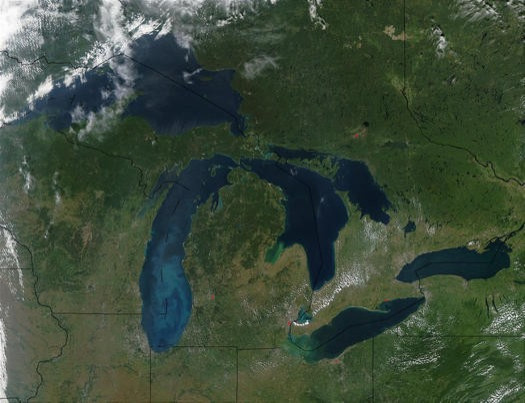Earth's biggest lakes warming up as climate changes

Even as scientists are warning that the increasing global warming could be a threat to aquatic species, NASA researchers have determined that Earth's largest lakes have warmed during the past 25 years in response to climate change.
Water bodies in certain regions including the Great Lakes in Northern America and some in northern Europe appear to be warming more quickly than the surrounding air temperature, researchers say.
Researchers Philipp Schneider and Simon Hook of NASA's Jet Propulsion Laboratory in Pasadena, California, used satellite data to measure the surface temperatures of 167 large lakes worldwide as part of a comprehensive global survey of temperature trends in major lakes.
Lakes were warming at an average rate of 0.81 degrees Fahrenheit per decade, with some lakes warming as much as 1.8 degrees Fahrenheit a decade.
Though, the warming trends were experienced across the globe, the greatest increases were in the mid- to high-latitudes of the Northern Hemisphere, researchers added.
In North America, warming trends were slightly higher in the southwest United States than in the Great Lakes region, whereas the warming was weaker in the tropics and in the mid-latitudes of the Southern Hemisphere.
The study found that the largest and most consistent area of warming was northern Europe, while the warming trend was slightly weaker in southeastern Europe, around the Black and Caspian seas and Kazakhstan. The trends increased slightly farther east in Siberia, Mongolia and northern China.
Our analysis provides a new, independent data source for assessing the impact of climate change over land around the world, said Schneider. The results have implications for lake ecosystems, which can be adversely affected by even small water temperature changes.
Small changes in water temperature can result in algal blooms that can make a lake toxic to fish or create non-native species that change the lake's natural ecosystem. An algal bloom is a rapid increase or accumulation in the population of algae in an aquatic system and may occur in freshwater as well as marine environments. Some blooms may be recognized by discoloration of the water resulting from the high density of pigmented cells.
The NASA researchers have focused on summer temperatures (July-September in the Northern Hemisphere and January-March in the Southern Hemisphere) as it is difficult to collect data in seasons when lakes are ice-covered and/or often hidden by clouds. Only night-time data was used in the study.
© Copyright IBTimes 2024. All rights reserved.





















